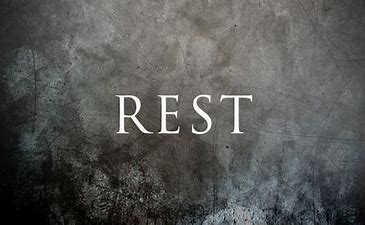
Life is hard…
… sometimes more so than others. But rarely worry free … rarely-a-skipping-down-the-lane-on-a-sunny-day kind of freedom.
Maybe you’re at a good place right now … able to jump out of bed with a smile on your face. Or maybe not. Maybe you struggle to fight off depression before you even get out of bed. If you are interested in sharing how your year has been so far, feel free to leave your thoughts below or send them to me privately. I am eager to hear from you!
It’s been that kind of a year for me … the wake-up-under-a-cloud, afraid, tired, and discouraged kind of year. I could share with you my emergency room trip over Thanksgiving, my mother passing away in October, unexpected job changes, financial crises as a result, personal medical upheavals, and so forth, but I would only be just getting started. It’s been a lot. I’ve been struggling, and I’m tired. Maybe you are too.
Yet, monthly spiritual direction throughout this year has been a lifeline. A time that is specifically set aside to listen to God … to look for God’s hand in my life. I cannot recommend spiritual direction enough!
It was in the midst of this year of chaos … in the times of intentionally listening to God, when I heard God call me back.
Back, that is, into the womb.
Weird, right?
Maybe, maybe not.
What comes to mind when you think of a womb? I think of a safe, warm, and protected place. A place where a little one is nourished, cherished, snuggled and nestled in . A womb is quiet and peaceful. It’s a place where new life begins.
A womb—God’s womb—it started sounding pretty good.
Okay, not literally. I mean, God does not literally have a womb any more than God literally has a penis. (Sorry for the graphic explanation, but you get my point.) Yet, the idea of God having a “womb-type” does actually make some sense in light of Scripture.
Let’s think about this. Besides all the Scriptural metaphors of God in the feminine, like as a nursing mother, a mother hen, a mother bear, it was Jesus who said, “I tell you the truth, unless you are born from above, you cannot see the Kingdom of God” and also, “Unless you are born of water and of the Spirit...” Then later John tells us, “Everyone who believes that Jesus is the Christ is born from God.”
Then there are the more subtle ways Scripture teaches us about God’s womb, for example, “The Lord is gracious and full of compassion…” (Psalm 145:8). The Hebrew word for “compassion” (rakhum) has its root in the word “womb” (rekhem). It’s a word full of the strong emotions a mother has for her child. Or in Isaiah 49:15-16, when God self-identifies with the feelings of a woman, “Can a woman forget the child at her breast and have no compassion (rakhaum) on the son of her womb?”
That’s what I was needing—maybe you too—needing a nest, if you will, a place of compassion, a place to be held close, nourished, and protected.
So, I went with that image and found it healing.
For me, it visualized what I was reading in the Bible—about being protected and sheltered, about finding rest. The image of God’s womb was a place to be restored, a place from which new birth could happen.
The more I thought about it, the more it made sense.
Scripture repeatedly uses female images for God. The Church, tragically, doesn’t teach those images, even though Jesus clearly spoke about them. Let’s look at another example.
We get the phrase “born again” from the dialogue between Jesus and Nicodemus (John 3). “You must be born anew,” said Jesus. And how is one born anew? From a womb. Nicodemus totally understood Jesus’ words to be about women and wombs, he responds with, “Surely, they cannot enter a second time into their mother’s womb to be born!” Jesus tells him not to be surprised by this saying, and goes on to say, “… no one can enter the kingdom of God without being born of water and born of the Spirit.”
What I find interesting—sad, really—is that most translators choose to translate the word apo in Greek as “of.” The word could be translated either way, of or from. Sometimes in Scripture the word is translated from, sometimes of. Why did translators choose “of” here instead of “from,” making Jesus’s words a bit awkward. My guess is that even though Jesus was clearly referring to birthing from a womb (as Nicodemus picked up on), perhaps it’s a little too unsettling to quote Jesus talking about being born from the Spirit, or born from God, because it brings to mind the image of God as female, as having a womb, as giving birth. And that, for some people, may just be too uncomfortable.
But think about the beautiful side of wombs …
… that at about 18 weeks, a baby can begin to hear the sounds of its mother’s body—her heartbeat, air moving in and through her lungs, her blood.
Transferring these realities to me and God makes me want to cry … it makes me yearn to be in God’s womb. I long to hear the heartbeat of God, to hear the wind—the Spirit—move through God’s lungs.
By the third trimester a baby can recognize its mother’s voice. A baby in utero will respond with an increased heart rate when his or her mother is speaking, suggesting they are more alert when they hear her voice.
I want that! I want to recognize God’s voice … I, too, want to be more alert when I hear the voice of God!
When we limit our images of God to masculine, we limit God. We put human-made boundaries around how God desires to be toward us. Restricting our metaphors of God to what makes us comfortable is nothing less than trying to control God.
It places us above God.
It is sin.
I invite you to do some imaging … some visualizing yourself in the womb of God. It’s safe there. It’s warm. You are wanted. You are loved. And it’s the perfect place to be born anew.
I would love to hear from each of you! To hear your thoughts about the womb of God. Is it inviting?
Blessings to each of you, my friends!





























